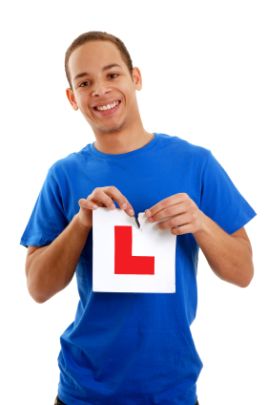The lane discipline of a motorway
Driving on a motorway is not something you will be able to do until you pass your test, and therefore it is important to understand as much about motorway driving as you can before your first motorway journey.
You will need to know particularly what the different lanes are for. Most motorway stretches will have three lanes, and a hard shoulder. Here is what they are each for:
The hard shoulder is there for emergency use only, and you should never use it for anything like overtaking! Occasionally if other lanes of the motorway are closed the hard shoulder will be used as a temporary lane, but in virtually all road conditions you should never use the hard shoulder.
The left hand lane is the one that you should be in most of the time. Although many people appear to hog the middle lane, it is the left hand one you should drive in most of the time.
The middle lane is used for overtaking traffic in the left hand lane; if there are several slower moving vehicles in a row you can stay in this lane to stop having to dart in and out, but once you pass those vehicles then you should move back into the left hand lane.
The outer most right hand lane is there for overtaking traffic that's in the middle lane. There are several road vehicles that are not allowed in this lane. These include large goods vehicles, and those that are towing a trailer, and also vehicles with weight above 7.5 tonnes.
So in summary, drive in the left hand lane apart from for overtaking, and once you've overtaken then move back into the left hand lane unless there are a stream of slower moving cars you need to pass in which case you should move back in to the left lane once you've passed them. Never undertake or use the hard shoulder, which is only there for emergencies.
Related Articles...
Some common engine faults
It is beyond the scope of the articles here to go into detail about how the engine works and what the various parts of it are. For the theory test you won't need to know a great detail about the...
Your ignition warning light
When you turn on the electrical circuits in your car, then the ignition warning light will come on: make sure that this does indeed happen.
Once the engine itself is started, then the ignition...
When to expect your licence
The answer to this question depends on whether you have a licence issued after March 2004 or not, which was a photocard driving licence. If so, then you h'll have the option to get it...
Your vehicle's age is important
The age of your car is important for several reasons.
The main reason is that if your car is under three years old, there are four documents that you must be in possession of in relation to...
Risk factors when driving: snow and ice
When the snow is falling, there is one big problem - it is hard to see far infront. So like fog, reduced visibility is the problem with snow. And when there is heavy snowfall it can be very hard...
Road conditions: driving in rain
Driving in rain is something that you can be sure you will experience regularly once you are an actual driver, although depending where you live and the time of year you learnt, you might have...
Things to look for when checking tyre condition
The tyres are extremely important elements of the car, yet many people do not think much about them when checking that their vehicle is roadworthy.
However, in addition to checking the amount...
Nervous Driver Tips
Many people who learn to drive have a combination of nerves and excitement. Even if someone says they have no nerves and are perfectly confident when it comes to driving, the first time you get...
How hazard perception scoring works
For each hazard there is a possible score of zero to five that is available. With a total of 15 hazards to find that makes a total possible score of 75 being available on the hazard test.
The...
Driving Theory
Practice makes perfect. It is a known fact that if you practice a particular skill, you get better at it. This is true of mental skills such as performing mental arithmetic: the more you try to do...
Back to home page of driving theory test questions

